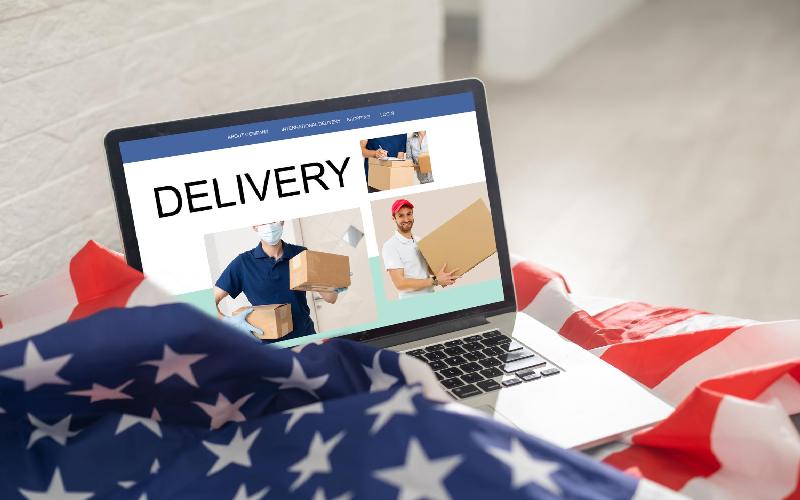The pandemic changed customer expectations dramatically. Being stuck at home and getting everything delivered online fueled the rapid transformation of e-commerce. Now customers demand that their shopping experience be fast, convenient, seamless, and transparent. Meeting these heightened expectations requires a robust and efficient last-mile delivery strategy. But what about companies that don’t have their own fleet of delivery trucks? This is where last-mile delivery services in USA come into place.
Businesses have realized the need to optimize this crucial stage of the supply chain and are seeking out reliable last-mile delivery partners to handle this responsibility. The last mile is no longer just a logistical challenge and has become a competitive differentiator.
In this article, we’ll delve into the world of last-mile delivery and see how you can choose the best delivery partner for your business.
Understanding last-mile delivery
Last-mile delivery is the complex process of shipping individual goods from a distribution center or fulfillment warehouse to a customer’s doorstep. It is the final stage of the supply chain is often the most resource-intensive and critical due to its direct impact on customer satisfaction. It involves a series of interconnected steps:
- Order processing and routing optimization: Efficiently allocating orders to delivery personnel while considering factors such as delivery windows, traffic conditions, driver capacity, and order density.
- Inventory management and fulfillment: Ensuring accurate stock levels, rapid order picking, and precise packaging to minimize delays and errors.
- Packaging, labeling, and documentation: Creating robust packaging that protects products during transit, applying clear shipping labels, and generating comprehensive delivery documentation for traceability.
- Transportation and logistics: Select the most suitable transportation mode (e.g., vans, trucks, bikes, drones) based on order volume, delivery distance, urban conditions, and delivery time requirements.
- Delivery execution and customer interaction: Delivering packages on time, providing exceptional customer service, managing returns, and capturing proof of delivery.
- Reverse logistics and returns management: Efficiently handling returned items, processing refunds or exchanges, and minimizing associated costs.
What makes last-mile delivery so crucial is that each step is interconnected. So if any of the steps in between go wrong, it can impact the delivery efficiency and overall customer satisfaction. For instance, accurate inventory management would ensure that orders can be fulfilled promptly, while efficient routing optimization minimizes delivery time.
Challenges in last-mile delivery
Last-mile delivery is fraught with challenges and obstacles that can significantly impact the overall efficiency and cost-effectiveness of the delivery process. Here are a few challenges that logistic companies in USA face during last-mile delivery:
- Urban Congestion: Increasing urbanization and the proliferation of online shopping have led to severe traffic congestion in many cities. This, in turn, results in longer delivery times, increased fuel consumption, and higher operational costs. Additionally, finding parking spaces and navigating through narrow streets can be time-consuming and frustrating for delivery drivers.
- Rising Costs: The last mile is characterized by high operational costs driven by factors such as fuel prices, labor shortages, and the increasing complexity of urban deliveries. The need to meet tight delivery deadlines, often requiring same-day or next-day service, further exacerbates these costs.
- Delivery Time Pressures: Consumer expectations for fast and convenient delivery have intensified, putting immense pressure on delivery service providers. Meeting these demands requires sophisticated logistics planning, real-time tracking, and efficient route optimization.
- Delivery Failures: Missed deliveries, incorrect addresses, and package theft can erode customer satisfaction and damage a company’s reputation. Implementing robust delivery management systems and employing reliable delivery personnel can help mitigate these issues.
- Sustainability Concerns: The environmental impact of last-mile deliveries is a growing concern. The increasing number of delivery vehicles contributes to air pollution and traffic congestion. Adopting sustainable practices, such as using electric vehicles, optimizing delivery routes, and reducing packaging waste, is essential for building a greener supply chain.
- Labor Shortages: The last mile is heavily reliant on human labor, and the industry is facing a shortage of qualified delivery drivers. This shortage can lead to delays, increased costs, and difficulties in meeting delivery demands.
How to choose the right last-mile delivery service in USA
A well-chosen last-mile delivery service partner can hugely impact your delivery speeds, overall costs, customer satisfaction, and operational efficiency. Here are some key factors that you should consider while choosing a last-mile delivery provider:
- Speed of delivery and service levels
Customers have different preferences of when they want their order to be delivered. Make sure the provider offers you different delivery windows, whether it’s same-day, next-day, or two-day delivery. They should also be flexible in accommodating specific delivery times if requested by the customers. Also, evaluate the range of services offered like while-glove delivery or reverse logistics.
- Coverage and reach
Ensure that the provider covers your target market and has a strong presence in the desired geographic regions. You’d want to work with a provider that can handle urban and rural deliveries efficiently and without errors.
- Cost and pricing structure
There are multiple carriers that you can choose from so it is important to compare their pricing structures, including base rates, fuel surcharges, and additional fees. Evaluate the effectiveness of the provider based on the average delivery distance and inquire about any potential hidden fees that can impact overall costs.
- Technology and integration
Assess the provider’s technology platform, including features like route optimization, real-time tracking, and proof of delivery. Evaluate the ease of integration with your e-commerce platform, order management system, and other relevant systems.
- Scalability and flexibility
E-commerce business is dynamic and changes frequently. The provider must be able to handle fluctuations in order volume and cater to increasing demands, especially during peak seasons. If the provider is unable to expand its services to meet your future business needs, then it might not be a good fit.
Wrapping Up
After you’ve built a brand and received customer orders, it’s the responsibility of the last-mile delivery service provider in USA to ensure the orders are delivered accurately. PowerSCM is one of the leading logistic companies in USA and their comprehensive suite of supply chain solutions helps businesses overcome the challenges of last-mile delivery and delivery exception customer experiences.





